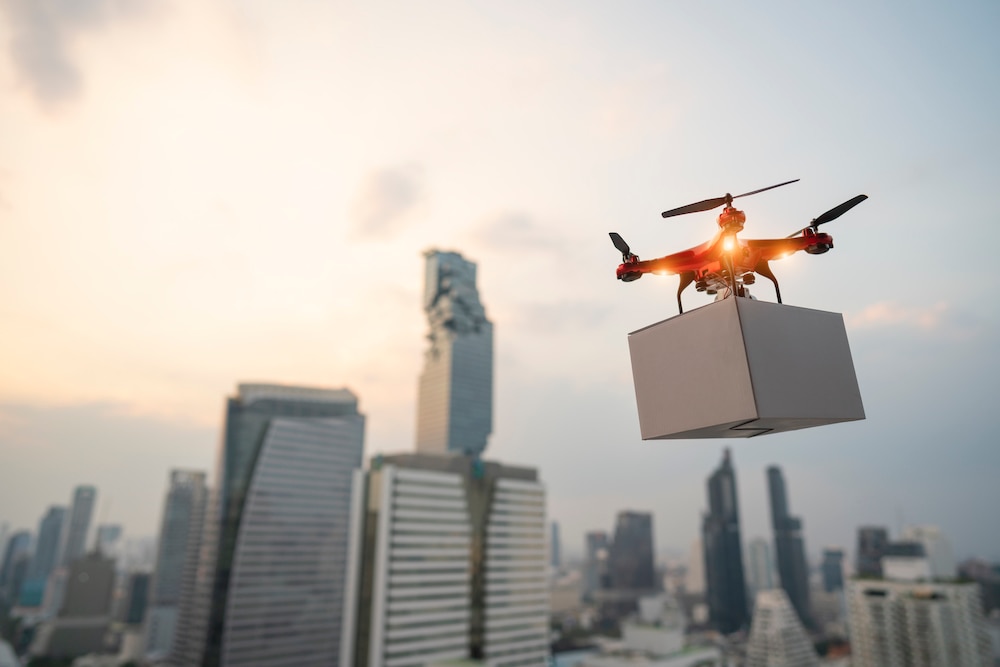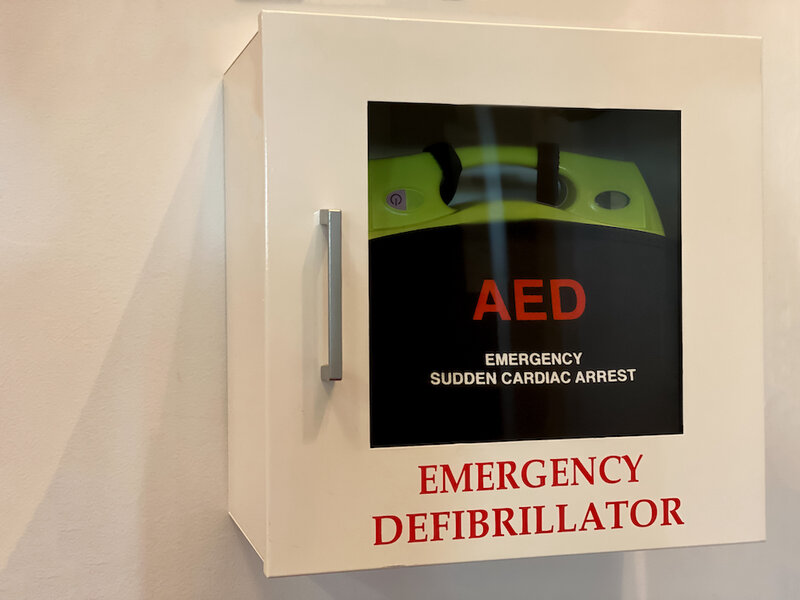Create a free profile to get unlimited access to exclusive videos, sweepstakes, and more!
Life from above: Drone-delivered defibrillators could save lives
Cardiac quad-copters are the autonomous drone future we need.

It’s nigh impossible to choose a scene from The Thing which stands above the rest in terms of gore and practical effects, but if you were going to try, the chest chomping scene would be a contender. When Norris falls unconscious and the Antarctic survivors believe he’s suffered a heart attack, they break out a defibrillator in an attempt to save his life. Dr. Copper gives Norris a shock and pauses to check for a pulse. Everyone is on high alert, a reasonable response to an otherworldly bodysnatching threat. Then Copper goes in for another shock and instead of the firm resistance of a ribcage, he finds a toothy opening which swiftly severs his arms from his body.
It's a sequence of events which could only unfold on an Antarctic expedition invaded by an alien entity. In reality, using an automated external defibrillator — AED for short — is one of the easiest and most effective things you can do to save the life of someone experiencing a cardiac event.
Today, if you witness someone experiencing cardiac arrest, the best thing you can do is call 911 and start CPR, but response times can take several minutes, and the likelihood of successful recovery drops pretty rapidly as time goes by. Getting substantial medical intervention quickly is critical to the survival and recovery of patients, something which can be challenging if an emergency takes place in an urban environment or is otherwise impeded by traffic. In a paper published in the journal Manufacturing & Service Operations Management, Justin Boutilier, an assistant professor of industrial and systems engineering at the University of Wisconsin-Madison, is working toward a swifter delivery system for AEDs using drones.
“It’s a cool idea that could have a big impact. We wanted to start studying it to try and think carefully about where to put these drones, how many we would need, and what effects we could expect them to have,” Boutilier told SYFY WIRE.
Drones are a potential solution for this problem because of the relative ease and lightweight of AED technologies. Drones are fully capable of carrying this kind of medical payload and can fly a straight route from their home base to the site of an emergency.
The key elements of the study involved figuring out how many drones you would need to service a particular area and where to put them in order to maximize their range and cut down on response times. Boutilier and his co-author Timothy Chan used Toronto as a simulated use case and looked at different goals to figure out the number and distribution of drones.
“In Toronto, if you want to respond one minute faster than the status quo, you only need three drones. Toronto is a city of just over two million people, so that’s pretty reasonable. Interestingly, even in the most rural area we studied you still need two drones. That’s because the area is so geographically large,” Boutilier said.
The number of drones needed increases if you want overall faster response times, though it’s still a relatively small investment. The study found that a dozen drones in Toronto could cut response times by three minutes, when compared with traditional ambulance response times.
At present, the proposed program is looking at existing emergency response locations as a base for these medical response drones. They could be housed in police stations, fire stations, and ambulance stations. Additional potential locations include hospitals or government buildings. The idea is to place them in areas with existing infrastructure and resources. It’s also possible that they could be placed within the wider community if existing buildings aren’t sufficient.
“It would be integrated into the 911 system. You’d call 911 and it would be dispatched just like an ambulance is dispatched today,” Boutilier said.
The drones would fly autonomously, perhaps controlled by a standby controller who could step in if needed. Automated external defibrillators are about as simple as medical technology comes. They are pretty close to plug and play, with a user applying the pads and pressing a button, the machine does all the heavy lifting. That said, researchers understand the need for education and support for bystanders who might be called upon to save a life. With that in mind, the drones could also include integrated support from a dispatcher.
“The drone has a camera and microphone and that gives an opportunity for the dispatcher to coach this person, they’d be able to see and hear them. There is some research that dispatcher-aided CPR is very helpful. You can imagine in a stressful situation, having someone there to guide you could be a big deal,” Boutilier said.
The next steps involve real world studies, either a pilot study or formal randomized control studies in order to find out if the simulations hold up to implementation in the real world. There’s good reason to believe that it will. In December of 2021, a drone-delivered defibrillator saved the life of a 71-year-old man in Trollhättan, Sweden.
The question appears to be not whether the system will work, but whether we’re willing to put these tools into the hands of communities. With any luck, lifesaving automated drones will soon populate our skies. In an ideal world you’d never have to use one, but when a crisis hits, it’s better to have a heart-shocking flying robot when you need it.



























